This piece was developed for the 2019 Oslo Forum. Co-hosted by the Norwegian Ministry of Foreign Affairs and the Centre for Humanitarian Dialogue, the Oslo Forum is a discreet and informal annual retreat which convenes conflict mediators, high-level decisionmakers, and key peace process actors to reflect on current mediation practice.
In The lost art of peacemaking, his background paper for the 2018 Oslo Forum, the Executive Director of the Centre for Humanitarian Dialogue, David Harland, sketched out in narrative form a bell curve of U.N.-brokered peace agreements: few during the Cold War, then a high number of successes in the 20-plus U.S.-dominated “unipolar” years after 1990, and, finally, a dearth of U.N.-brokered peace agreements today.
Harland points to several constraints that inhibited the U.N.’s mediation capacity, such as the return of geopolitics, the atomization of conflict, and the spread of conflicts across borders. One could also add technological changes (with secrecy harder to maintain in our Twitter age), greater global polarization diminishing the leverage of unified support, the role of nonstate actors ranging from transnational terrorists to businesses, and the demonstrable need for more inclusive processes that go beyond the previous approach of meeting (inevitably male) political or military leaders behind closed doors.
After analyzing such factors, Harland concludes: “[N]on-U.N. actors have found ways to address some of these issues, but have not been able to entirely fill the gap left by the U.N. Any further progress in the field would appear to require a better combination of the efforts of the U.N. and non-U.N. actors.”
That last line deserves more reflection, and it coincides with something I felt after having the privilege of serving nearly six years as U.N. Under-Secretary-General for Political Affairs. In trying to support the U.N. Special Envoys and Special Representatives of the Secretary-General heading political missions in some of the most challenging political and security environments in the world, as well as undertaking my own political engagements, I saw in practice, vividly, the constraints on the U.N. mentioned by Harland.
At the same time, the growing number, and expanding capacities, of non-U.N. mediation actors changed the landscape in which the U.N. envoys operate. The African Union (AU), Africa’s sub-regional organizations, the European Union (EU), the European Institute of Peace (EIP), the Crisis Management Initiative (CMI), the Dialogue Advisory Group (DAG), the Centre for Humanitarian Dialogue (HD), the Community of Sant’Egidio—that list just scratches the surface of a bewildering array of groups playing important mediation and facilitation roles today.
Moreover, many of these groups offer valuable technical assistance and capacity-building training in mediation skills to local actors, further blurring the lines of who has the lead in a political process. Even if the U.N. mediator retains a lead role which has been given by the Security Council, and even if the U.N.’s mandate is under Chapter VII authority, it is unrealistic to assume that other local, regional, or international actors—with interests in, and increasingly sophisticated understanding of, mediation—will simply stay on the sidelines and cheer on the U.N. envoy.
My conclusion is that, in general, U.N. mediators and facilitators today need to view themselves less as the star soloists of yore—Lakhdar Brahimi at Taif in 1989 ending Lebanon’s civil war is a classic example—and more as conductors of a coherent, coordinated orchestra of mediation actors who can reach more of the people who can influence the direction of a conflict and who are affected by the conflict. And if the U.N. does not happen to have the best profile, leverage, or mandate, or the full consent of the parties to be the lead mediator, the conductor’s baton should be held by another, with the U.N. as a supportive player (as in the recent agreement regarding the Central African Republic).
Those assets do not mean that U.N. mediators have monopolies on wisdom, leverage, or contacts.
Without question, the U.N. has key assets, including the legitimacy of universal membership, the power of Security Council mandates, the profile and good offices of the Secretary-General, relatively predictable funding streams, and organizational capacities and scale that dwarf other actors. But those assets do not mean that U.N. mediators have monopolies on wisdom, leverage, or contacts. The 2012 United Nations Guidance for Effective Mediation notes that diversity of actors can be an asset, as long as there is “clear division of labour based on comparative advantages among mediation actors operating at the different levels.” What is not essential, in other words, is for the U.N. to always lead or insist on going it alone. What is essential is that a lead mediator works to ensure coherence and complementarity across peacemaking efforts.
Libya provides a good example. The U.N. Support Mission for Libya—UNSMIL—has a broad Security Council mandate that includes leading international efforts to facilitate a Libyan political process. Yet, the U.N., HD, DAG, CMI, EIP, Sant’Egidio and surely others also engage politically on the ground in Libya, each focused on some specific aspect of the overall problem of instability in Libya. EIP, for example, has promoted stabilization efforts in the Kufra district (bordering Egypt, Sudan, and Chad) as well as around oil facilities. HD conducted similar work in Sabha, and DAG has established connections with competing militia leaders in Western Libya and promoted local ceasefires. In addition, the African Union is protective of its perceived role in Libya, with AU Peace and Security Commissioner Smaïl Chergui joining U.N. Department of Political and Peacebuilding Affairs Rosemary DiCarlo on a joint trip to Libya in March this year.
Similarly, U.N. Secretary-General Guterres and Chairperson of the AU Commission Moussa Faki regularly compare notes on Libya. While one could argue that there’s plenty of work to go around to keep everyone busy, the multiplicity of actors could easily lead to chaos, confusion and the much-dreaded “forum shopping.”
In my view, the Special Representative of the Secretary General (SRSG) to Libya, Ghassan Salamé, has dealt effectively with this crowded mediation facilitation landscape by pursuing what I—but probably not the SRSG himself—would call an “orchestra conductor” approach. He, of course, has no mandate to dictate to other organizations what they should do, and the other organizations retain their independence, reporting to their own governing authorities and not to the SRSG or the Security Council. But, by making sure that UNSMIL maintains contact with DAG, for example, Salamé’s team has broader insights into the various militias in the Tripoli area and thus what is needed to maintain and consolidate ceasefires in the capital. DAG is able to reinforce UNSMIL’s security efforts and augment UNSMIL’s reach. Waving his conductor baton more directly, Salamé specifically asked HD to conduct a series of public consultations in 43 locations across Libya from April to July last year in which thousands of Libyans were able to share their views about Libya’s future.
Logistically, and from a security angle, this type of broad consultations would have been nearly impossible for the U.N. to do directly. Moreover, as Salamé surely realised from his own travels across Libya, had the U.N. itself been leading these town hall-type consultations, the Libyans would have naturally focused not on their vision for their country but rather their critiques and demands of the U.N. By incorporating the results of this unprecedented consultative process into his thinking, Salamé can better align U.N. engagement with Libyans’ own aspirations, enhancing the chance of popular support for an eventual political settlement.
Whether it is UNSMIL’s co-ordination with DAG, its request to HD to organize public consultations across Libya, or its coordination with other non-U.N. actors, Salamé has essentially broadened UNSMIL’s reach and understanding of Libya. (As I write this in early April 2019, Khalifa Haftar and his self-styled Libyan National Army is threatening Tripoli, in belligerence which is timed, I believe, to forestall the National Conference facilitated by the U.N. that grew out of the HD-organized consultations. Haftar’s paranoia about the National Conference inadvertently reveals the Conference’s potential to transcend Libya’s divisions – but without Haftar anointed as leader through peaceful, political means.)
Salamé’s choice to work closely with non-U.N. actors in Libya also illustrates the need for the U.N. to sometimes collaborate with peacemaking actors who enjoy more flexibility on the ground. While the U.N.’s “brand” is impartial, and U.N. envoys retain the theoretical right to talk to anyone as needed in a political process, Security Council mandates, fear of Security Council scrutiny, or the political interests of powerful member states mean that, sometimes, a lower-profile non-U.N. actor can get better or easier access to some actors. The issue of how to engage both Turkey and Syrian Kurds constructively has bedevilled multiple U.N. Syria envoys, and the U.N.’s Yemen envoys have struggled to overcome Houthi suspicions about a mandate based on an April 2015 Security Council resolution that essentially calls first for a Houthi surrender and only then for political talks.
In both cases, non-U.N. mediation actors may be willing and able, within U.N. guidance, to help the U.N. envoys implement their mandates successfully. Certainly, by working closely with non-U.N. mediation actors who reach different segments of the local population, U.N. envoys can enhance the inclusivity that should characterise modern peace processes. In Yemen, for example, CMI’s Women’s Forum for Dialogue and Peace helps lessen the gender imbalance of most political engagements.
Without question, there are times when old-style U.N. mediation and facilitation behind closed doors still work, as demonstrated by the Hodeidah agreement brokered in Stockholm in December by U.N. Special Envoy Martin Griffiths. But the Hodeidah agreement, while important, is more tactical than the strategic agreement of Taif or the U.N.-facilitated agreements that ended civil wars in Central America, Africa and Asia in previous decades. Given the rise in numbers and capacities of non-U.N. mediation actors, U.N. envoys would be wise to see these actors as force-multipliers and influence-extenders as they try to implement increasingly complex mandates and broker successful peace agreements. My guess is that the non-U.N. actors, while careful to maintain their own independence, will by and large welcome closer engagement, consultation, and coordination with U.N. efforts. I hope this is a topic that can be explored in more depth at this year’s Oslo Forum.
The Brookings Institution is committed to quality, independence, and impact.
We are supported by a diverse array of funders. In line with our values and policies, each Brookings publication represents the sole views of its author(s).

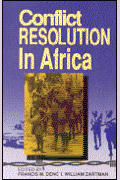
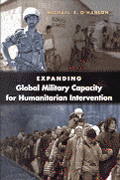
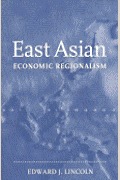
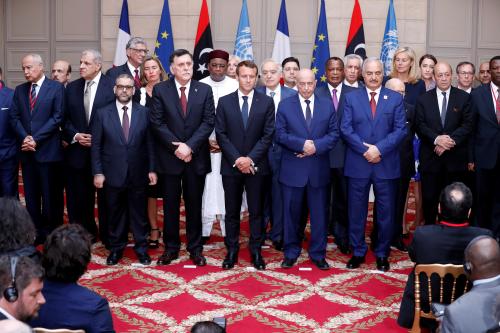
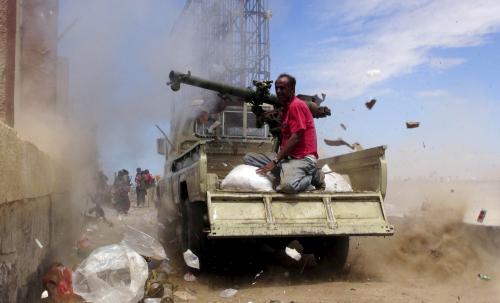
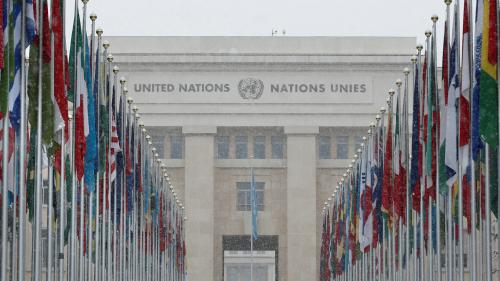




Commentary
UN envoys should be conductors, not soloists
Reflections for the Oslo Forum
June 18, 2019